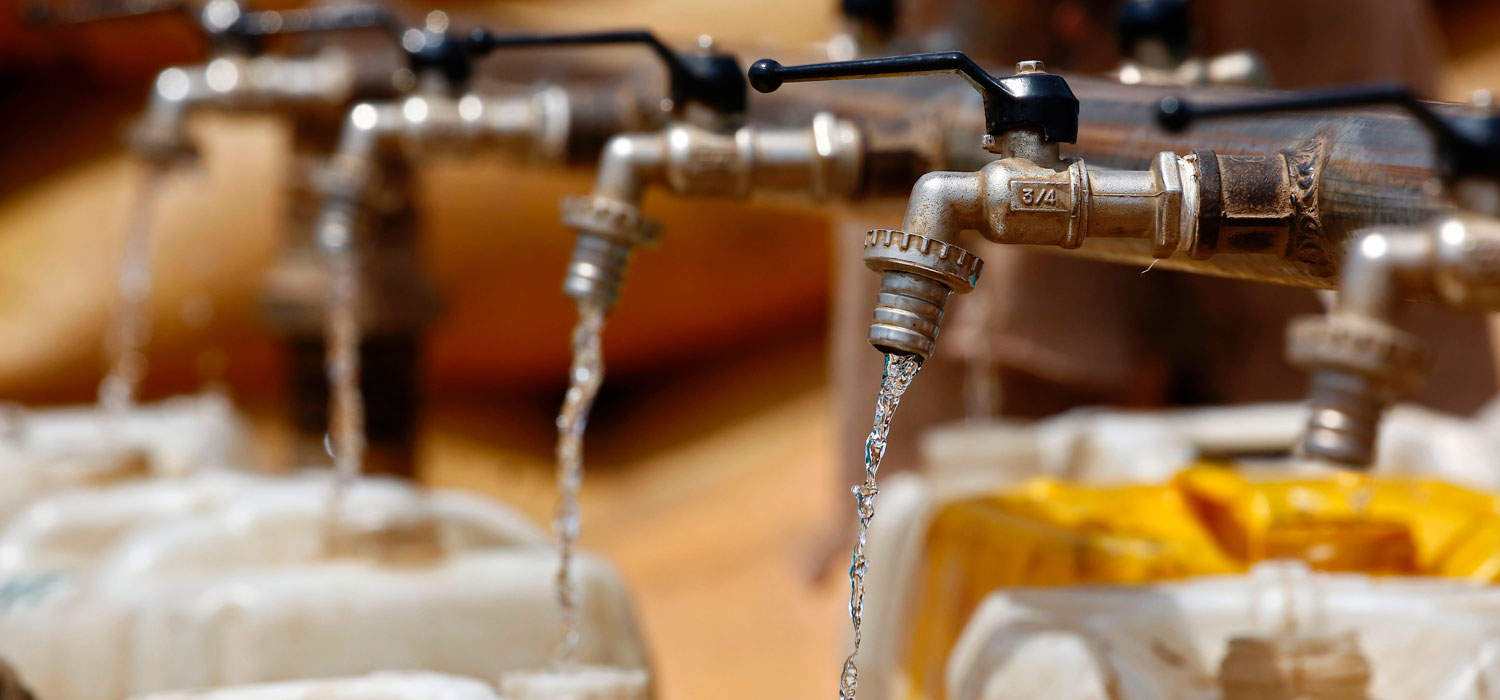
<p>South Sudanese refugees fill water jugs at Al-Nimir refugee camp in Sudan's east Dafur on June 20, 2017. Photo by Ashraf Shazly/AFP/Getty Images.</p>
The World Health Organization estimates that more than 2 billion people lack access to safely managed drinking water services. At the current pace, the world will fall short of meeting one of the United Nations’ sustainable development goals (SDGs): to achieve universal and equitable access to safe and affordable drinking water for all by 2030. Accelerating to meet the SDGs for water and sanitation will cost as much as $166 billion a year for capital expenditures alone.
Although critical to global efforts, utilities and municipalities serving the poorest households face three large hurdles, resulting in a funding gap that prevents them from meeting customers’ demand for clean water:
- They often cannot cover their operational and maintenance costs through existing tariffs and transfers alone.
- Higher tariffs, without improved service, would create an unsustainable burden for the poorest households, who may prefer not to connect to piped services at all.
- Operating at a loss, these utilities are not creditworthy and cannot tap private finance to make needed investments.
A new way to fund clean water access
New research from the Urban Institute and the Johns Hopkins School of Advanced International Studies explores sustainable funding sources to bridge this gap and expand access to safe drinking water.
Drawing from other sectors’ experiences and from interviews with more than a dozen water-sector experts, we identified potential funding models and recommended three—global philanthropy-led funds, solidarity levies, and land-value capture—for closer consideration by policymakers.
We also developed a conceptual global water access fund (GWAF) that could pool funding from these three models and allocate them to providers in a manner that provides incentives for access and utility performance for poor households. By pairing funding with technical assistance and tying it to measurable results, GWAF would use subsidies to help utilities upgrade, expand access, and move toward financial sustainability.
What is GWAF?
GWAF is a global fund, a model that has been established in other sectors to raise additional resources and pool funding for targeted interventions.
In the health sector, for example, Gavi, the Vaccine Alliance has received $15 billion in pledges and yielded a net increase in funding.
Consolidating resources has allowed many global funds to increase collective impact, yield efficiencies and improve cost-effectiveness, and encourage innovation.
Since reliable service delivery requires stable funding, GWAF would need to be replenished by a relatively predictable source. Solidarity levies—small surtaxes on consumer items or services—could present such a mechanism.
Unitaid, an organization that accelerates access to high-quality drugs and diagnostics in developing countries, generated more than $1 billion through a levy on airline tickets. A global solidarity levy on bottled water consumption or producers, for example, could generate sizable funds for GWAF, while providing incentives for reduced plastic waste.
To diversify GWAF’s resource base and establish a collective effort, funds raised globally can be matched by domestic resources in some developing countries receiving GWAF’s subsidies.
The form and size of this match will differ based on capacities, regulatory regimes, and economic composition of countries. For example, these local funds could be derived from extractive industry taxes or land-value capture efforts.
In addition, utilities will continue to collect tariffs from customers. GWAF may help utilities improve tariff collection and support efforts at smart tariffing to promote conservation and tailor subsidies to the poorest households.
Creating a paradigm shift in water provision
A combination of these three funding mechanisms can generate significant resources, enabling expanded access to safely managed water. To alter the paradigm for water provision, however, efforts to fund pro-poor water access must address the relationship between utilities and investors.
Because private investors extend credit or make investments in utilities likely to generate a return, and because investments in the poor are frequently seen as investments with a low (or even negative) return, pro-poor utilities are often locked out of financial markets, and profitable utilities are hesitant to expand services to the poor.
By tolerating risk and subsidizing utilities that make improvements, GWAF can help pro-poor utilities reach financial sustainability in the medium to long term. As has happened in Senegal and Cambodia, utilities can expand access to poor households while improving services and decreasing nonrevenue water loss.
For utilities unable to make this shift on their own, outside subsidies (like through GWAF) could bridge the funding gap, placing them in stronger positions to attract capital for further service investments.
To turn SDGs from pipe dreams to reality, our research suggests the water sector needs to take bold steps. Without long-term, reliable commitment from donors, hundreds of millions of people in the poorest and most fragile environments will remain without access for too long.
Let’s build a future where everyone, everywhere has the opportunity and power to thrive
Urban is more determined than ever to partner with changemakers to unlock opportunities that give people across the country a fair shot at reaching their fullest potential. Invest in Urban to power this type of work.